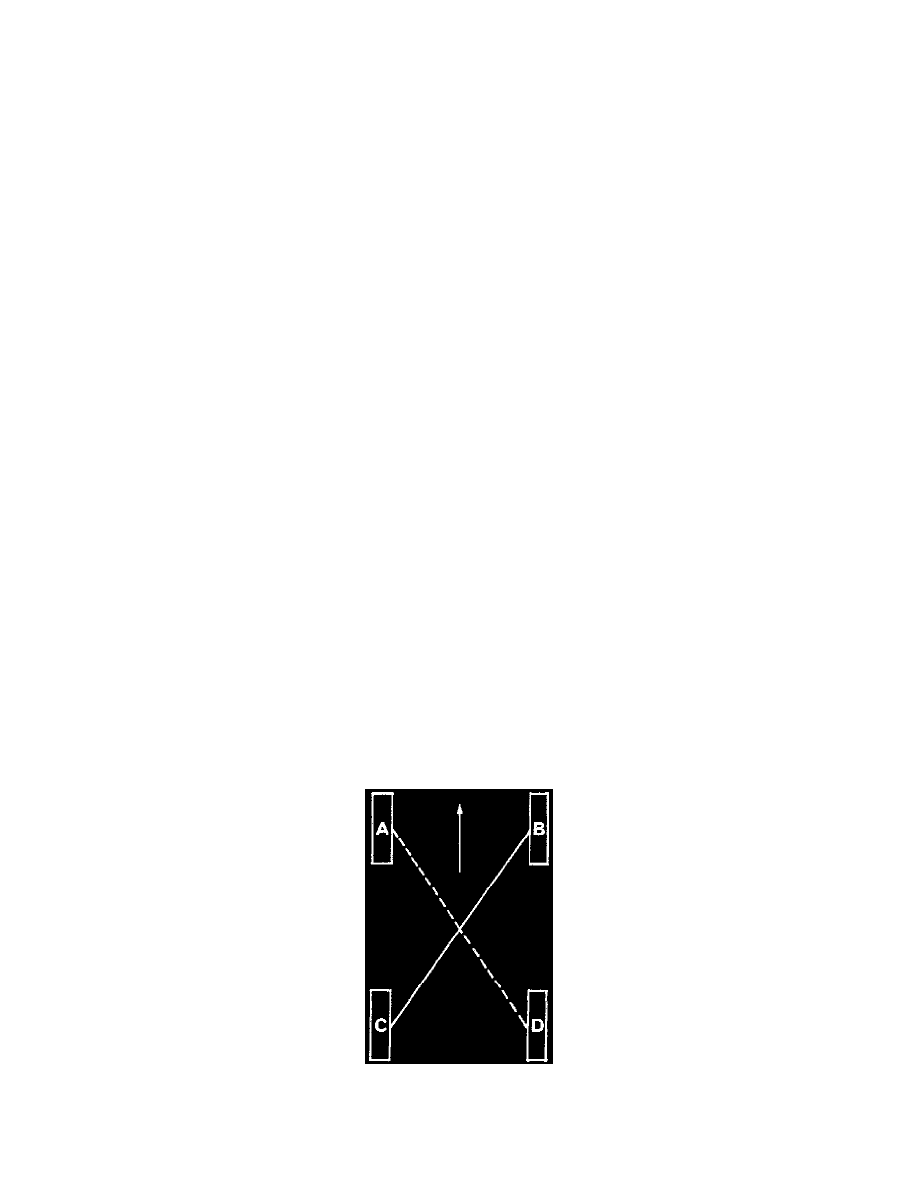911 Turbo AWD F6-3600cc 3.6L SOHC Twin Turbo (1997)

Alignment: Service and Repair
Standard Model
General Preparation
General
The main difference of the suspension alignment of the 911 Carrera (993) with regard to that of the 911 Carrera 2/4 (964) is in the operating
procedures for the rear axle. Except for minor details (new tie-rods, steering gear, different settings and tightening torques), the adjustment
procedures are the same as on the 911 Carrera 2/4 (964).
In addition to toe-in and camber, the kinematic toe-in change must also be checked and adjusted, if required, by changing the steering arm position
(steering arm angle) on the new multi-link rear axle. This additional (indirect) measurement is performed with Special Tools 9549 and 9550
mounted to arm 1/5 (lower arm) and arm 2 (toe arm). The specified adjustment sequence must be observed at all times.
Also make sure that the max. admissible front-to-rear height difference of 10 mm is not exceeded. No specifications exist for older models.
Check wheel alignment with an optical or electronic alignment tester. The measuring procedures are described in the operating instructions of the
alignment tester used. The following requirements must be fulfilled prior to checking the suspension alignment:
-
Vehicle at curb weight according to DIN 70020, i.e. vehicle is roadworthy, with full fuel tank, spare wheel and tools
-
Drive joint and wheel bearing clearance must be correct (wheel bearing clearance cannot be adjusted)
-
Specified tire pressure, fairly even tread depth.
If both the front and rear alignment has to be checked, start by checking and adjusting the rear wheel alignment. The camber specifications for the
front axle refer to the straight-ahead position of the wheels. When adjusting the camber setting, steering wheel and steering gear must be in center
position.
Before adjusting the suspension settings of the front and rear axles, make sure (after operations that cause changes in height or if the height was
incorrect) the height adjustment is checked with the vehicle at DIN curb weight. If wheel load scales are available, the height adjustment feature
allows the left-to-right wheel load difference to be kept to a minimum. The wheel load difference is adjusted by modifying the height tolerance.
The left-to-right wheel load difference should preferably kept as small as possible.
Important information for suspension alignment operations
When checking/adjusting the suspension alignment, observe the following items:
Height Adjustment/wheel Load Change
-
Changing the height on one side will simultaneously cause a change in wheel load. A wheel load change on one wheel will also change the
wheel loads of the other wheels.
-
The wheel load is increased by increasing the installed spring preload on one side (raising the vehicle).
-
The wheel load is reduced by reducing the installed spring preload on one side (lowering the vehicle).
-
Wheel load changes are always transmitted diagonally on the other side of the axle. In other words, when the wheel load is reduced or
increased on one wheel, the same happens on the diagonally opposite wheel.
Example:
Front right spring preload B is increased.
This causes the wheel load:
-
to increase at the left rear C and right front B
